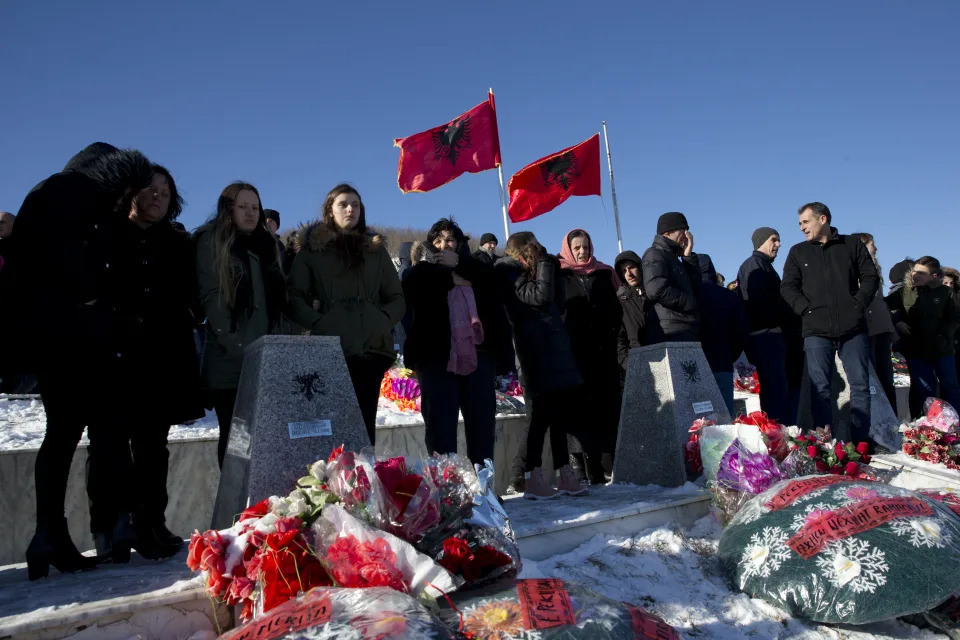
The Lies About the Killing at Račak Continue in the West to This Day
January 15th marked the 25th anniversary of an alleged massacre in Račak, Kosovo, then a core component of what remained of Yugoslavia.
The alleged killing of Albanian civilians by Serbian security forces provided the trigger for NATO’s illegal 78-day-long bombing of Belgrade from March to May 1999 and subsequent occupation of the province, which endures today.
As The Washington Post contemporaneously noted, the reported atrocity “transformed the West’s Balkan policy as singular events seldom do.”
Central to Račak’s potency was a publicity stunt staged January 16th by veteran U..S deep-state operative William Walker, then-chief of the Kosovo Verification Mission (KVM) of the Organization for Security and Cooperation in Europe (OSCE).
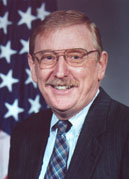
First, he led Western journalists and European officials up a hill near the village to a site where a number of Kosovo Albanians in civilian clothes lay dead, purportedly torn apart unarmed in cold blood by Yugoslav police and military gunfire. At a subsequent press conference, he issued an incendiary declaration:
“Although I am not a lawyer, from what I personally saw, I do not hesitate to describe the event as a massacre, a crime against humanity, nor do I hesitate to accuse the government security forces of responsibility. The [Yugoslav] government must produce the names of all involved in the police and [military] operations [in Račak]…who gave the orders, who executed those orders.”
Walker threatened that, if Yugoslavia did not allow international observers to visit Račak and “investigate this atrocity” in the next 24 hours, dire consequences would be forthcoming.
Immediately, images of KVM’s grisly apparent discovery, and Walker’s personal account of what had taken place, spread around the globe over and again courtesy of mainstream media outlets. As a result, hitherto reluctant Western citizens and governments demanded that action be taken against Belgrade, laying the foundations for the U.S.-led NATO aerial assault two-and-a-half months later.
As we shall see, almost everything we were told at the time by politicians, pundits and journalists about the Račak “massacre” was a brazen lie.
Largely forgotten today, this episode remains hugely significant. It is a palpable and shocking example of how distorted, manipulated if not outright fabricated atrocity propaganda is weaponized and exploited by Western powers in service of war.
The relevance to every NATO-instigated conflict—past, present and likely future—could not be more obvious, or urgent.
“Having Serb Friends”
By January 1999, Yugoslav authorities had been fighting a brutal counterinsurgency against the Kosovo Liberation Army (KLA) for some time.
An al-Qaeda-connected extremist group armed, funded and trained by the CIA and MI6, the KLA sought to construct “Greater Albania”—an irredentist project uniting Tirana with territory in Greece, Macedonia, Montenegro and Serbia—via insurrectionary violence.
The key was maximizing civilian casualties, so Belgrade’s war with the KLA could be misrepresented to Western audiences as an indiscriminate ethnonationalist genocide targeting Kosovo Albanian citizens.
As a Kosovo Albanian independence campaigner, unconnected to the KLA, explained to the BBC in March 2000:
“The more civilians were killed, the chances of international intervention became bigger, and the KLA of course realized that. There was this foreign diplomat who once told me, ‘Look, unless you pass the quota of five thousand deaths you’ll never have anybody permanently present in Kosovo from foreign diplomacy.’”
The KLA also kidnapped and killed Serb civilians, and pro-Yugoslav Albanians, often harvesting their organs to fund its terror campaign. This meant, as then-British Defense Secretary Geoffrey Robertson admitted to parliament in March 1999, “up until Račak…the KLA were responsible for more deaths in Kosovo than Yugoslav authorities.”
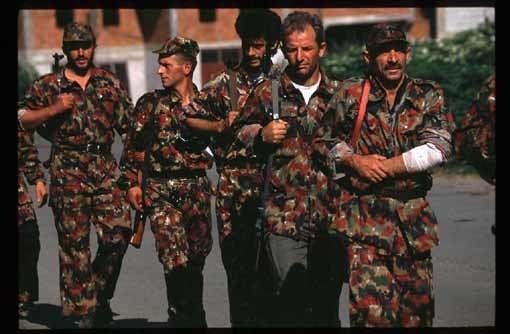
KLA chief Hashim Thaçi, now indicted for war crimes, remarked two years later that “a stone fell from our hearts” when William Walker “came and without hesitation” branded Račak “a massacre of civilians.”
The reasons for Thaçi’s relief are abundantly clear. In addition to laying foundations for NATO’s impending illegal “intervention” on the KLA’s side, Walker’s characterization also fundamentally misrepresented the scene in Račak to remove any suggestion the victims were KLA insurgents killed in bitter fighting with Yugoslav forces, or perhaps even Albanian civilians murdered by Thaçi and his fighters themselves, for the purposes of an international photo op. Yet, as KVM chief, Walker was well-placed to know the actual truth.
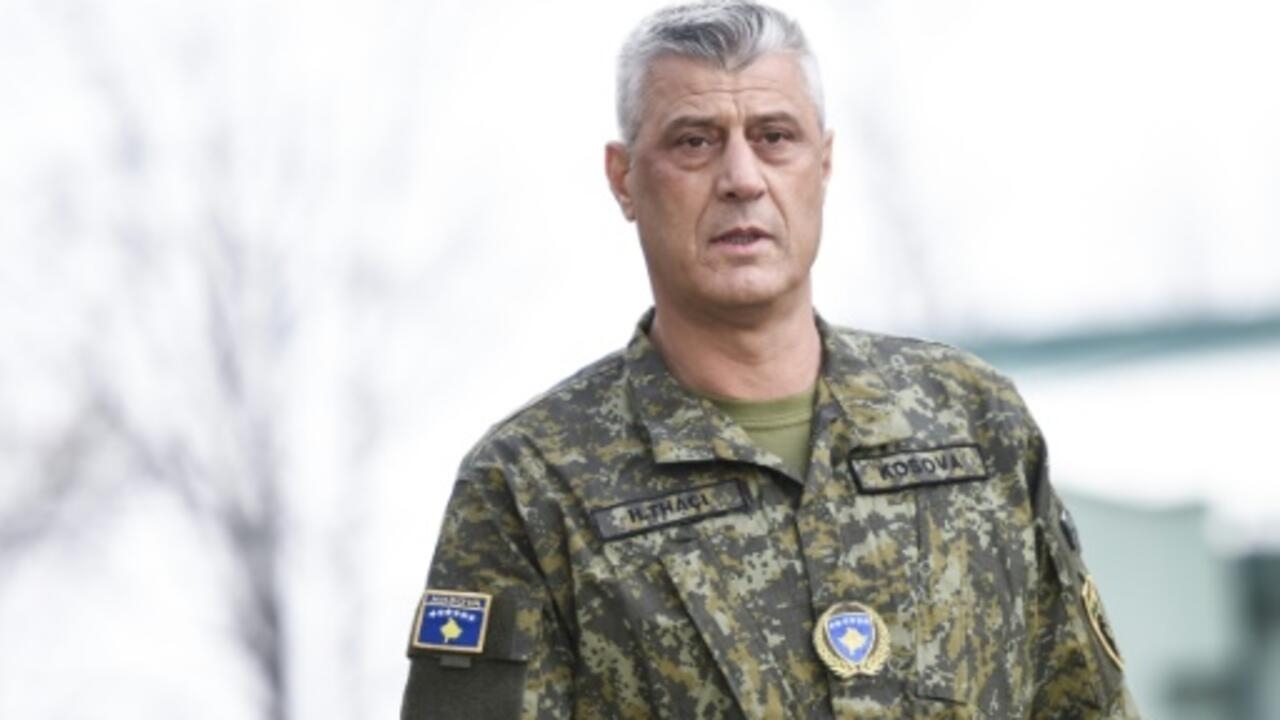
KVM was founded in November 1998, to monitor Yugoslavia’s adherence to a UN-negotiated cease-fire with the KLA. Under its terms, Belgrade electively withdrew its military from Kosovo. Yet, no concomitant obligations were imposed upon the KLA, which exploited the army’s absence to continue rampaging across the province. KVM was not charged with ensuring the terror group did not provoke violent responses from local authorities. In effect, its only role was to monitor how and whether Yugoslavia fought back.
Račak was a strategically vital vantage point from which to attack Yugoslav authorities, situated on a mountain range at the terminus of a major road, linking Kosovo’s capital Pristina with other cities and towns throughout the province. The KLA accordingly set up shooting nests to strike government vehicles from on-high driving through the area, as they often did. It was hoped successful attacks would draw police and security services into attacking directly.

The KLA preemptively dug extensive trenches around the village for that precise purpose. In the months leading up to January 1999 too, a KVM report notes the militia carried out numerous provocative acts in the area around Račak, to elicit attention from Yugoslav authorities. This included wounding several Albanians traveling in a taxi near a police convoy during a shooting ambush, kidnapping “a number of Kosovo Serbs,” and “arresting” Albanians for “crimes” such as “friendly relations with Serbs.”
Shockingly, per KVM’s report, the KLA even exploited the funeral of Račak victims on February 11, 1999, to “arrest” nine Albanian attendees for “crimes” including “having a brother working with the police; drinking with Serbs; having Serb friends; having a Serb police officer as a friend.” What befell abductees is unclear. Yet, the 2005 indictment of Kosovo’s then-Prime Minister Ramush Haradinaj and his deputy Idriz Balaj references the KLA brutally torturing, mutilating and murdering their Albanian prey.
“Rigged Scene”
So, what happened in Račak, then a known KLA hotspot? English-language media were not interested in the details, dutifully taking Walker’s word as unchallengeable gospel. The International Criminal Tribunal for the Former Yugoslavia (ICTY) indictment of Yugoslav leader Slobodan Milosevic, issued in May 1999, referred to “45 unarmed Kosovo Albanians” murdered in the village. Two months earlier, U.S. President Bill Clinton outlined his grounds for imminently unleashing hell upon Belgrade from the sky without UN authorization, at an international press conference:
“We should remember what happened in the village of Račak back in January. Innocent men, women and children taken from their homes to a gully, forced to kneel in the dirt, sprayed with gunfire. Not because of anything they had done, but because of who they were.”
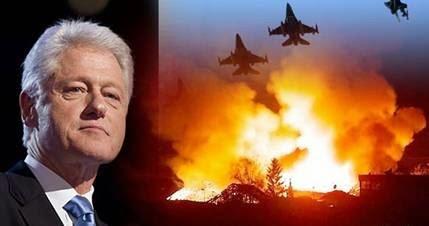
Foreign journalists told a very different story. Yugoslav authorities openly advertised in advance they were mounting a “counter-terror” operation in Račak on January 15th, in response to the KLA killing four police officers a week earlier. They invited the media to attend. An Associated Press film crew accepted—French reporters reviewed their footage, and interviewed them. Le Monde duly reported five days later police entered “an empty village…sticking close to the walls,” quickly becoming embroiled in a pitched battle:
“The shooting was intense, as they were fired on from KLA trenches dug into the hillside. The fighting intensified sharply on the hilltops above the village…KLA guerrillas, encircled, were trying desperately to break out. A score of them in fact succeeded, as the police themselves admitted.”
Meanwhile, Le Monde recorded how AP journalists similarly observed Račak had been abandoned by “virtually all” its civilian inhabitants. Taken over by the KLA subsequently, “smoke came from only two chimneys” in the vicinity, during a harsh winter. When Yugoslav security forces entered the village “in the wake of a police armored vehicle,” it was “nearly deserted”:
“They advanced through the streets under the fire of the [KLA] fighters lying in ambush in the woods above the village. The exchange of fire continued throughout the operation, with more or less intensity. The main fighting took place in the woods…The [KLA] was trapped in between. [Račak] was a stronghold of Albanian independence fighters.”
Eventually, police fled under a hail of bullets. The KLA tipped off KVM 24 hours later that dozens of dead civilians could be found in Račak. How Yugoslav authorities dragged “innocent men, women and children” from their homes in a largely deserted, enemy-occupied village, then “forced” them to kneel before execution while being relentlessly fired upon at will, isn’t certain. In fact, this scenario is literally impossible—not least because neither women nor children were in fact among the casualties.
Graphic photos of the purported execution site captured on January 16th by Kosovo-Albanian newspaper Koha Ditore before Walker, et al., arrived exclusively depict males of fighting age.
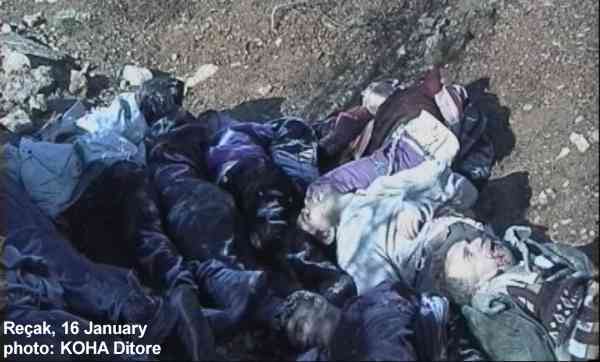
There are strong grounds to believe the scene was tampered with subsequently by persons unknown. One of the victims, evidently shot in the head, was wearing a traditional Albanian white cap when KVM visited the scene. They markedly lacked that headgear in Koha Ditore’s earlier pictures.
Fast forward to April 2002, Yugoslav leader Slobodan Milosevic was on trial at the ICTY, and cross-examining Walker’s personal assistant, British General Karol Drewienkiewicz. He asked, “how is it possible for somebody to be hit in the head and have his cap remain on his head,” adding, “forensic experts say that, from a shot of that kind and a wound with that kind, your eyes would pop out let alone a cap being displaced from your head.”
Curious if she had considered “this could possibly be a rigged scene for television purposes,” Drewienkiewicz admitted “that certainly was one of the thoughts that went through my head as I was going up the hill.” Later, Milosevic probed whether she knew Račak “was encircled by trenches and bunkers” at the time. She confirmed Walker and his motley retinue traversed heavily defended, KLA-constructed military installations and dugouts to reach the alleged “massacre” site.
“Greatly Complicated”
On January 18, 1999, two days after Walker threatened Belgrade with grave consequences unless international investigators were allowed into Račak, another impactful publicity stunt was staged. ICTY chief prosecutor Louise Arbour appeared at Macedonia’s border with Yugoslavia, an hour’s drive from Račak, demanding entry to inspect the village. Yugoslav officials denied her requests. Serendipitously, this was documented in real time by international news crews, which she just so happened to have in tow.

By contrast, the Western media barely noticed when, later on the same day, Yugoslav police arrived in Račak to collect the corpses for official forensic examination in Pristina, a task made extremely difficult by the KLA shooting at them throughout. Belgrade invited Belarusian and European Union specialists to conduct concurrent autopsies on the bodies. Brussels duly dispatched a team from Finland, led by Helena Ranta, a forensic oncologist the University of Helsinki.
Yugoslav and Belarusian pathologists identified gunpowder residue on the hands of almost all 40 bodies they examined, amply suggesting they were killed in combat. The Finnish investigators did not make their own findings available, but on March 17, 1999—as we shall see, a highly significant date—Ranta gave a press conference in Pristina about what transpired in Račak. Under Walker’s watchful gaze, she began by stressing what followed was merely her “personal view,” not an official EU conclusion.
Despite this, Ranta went on to endorse Walker’s narrative wholesale, repeatedly citing “information obtained” from KVM observers as fact. Straying from the desired narrative somewhat by admitting just 22 bodies—all male, no women, no children—had been found in Račak, she nonetheless asserted “they were most likely [emphasis added] shot where they were found.” The dentist unconvincingly based this judgment in large part on no ammunition being found in their pockets.
Ranta also admitted her team’s probe was “greatly complicated” by “investigating the bodies” at a morgue in Pristina “approximately a week from the estimated time of death of the victims,” without any “chain of custody.” She further conceded, “what may or may not have happened to the bodies” during the intervening time was “difficult to establish…with absolute certainty.” Thus, her findings could not conclusively determine “whether there was a battle or whether the victims died under some other circumstances.”
Of course, the Western media made no mention of these details in reporting the press conference. Subsequently, Ranta revealed that, shortly prior to her appearance, she met with Walker privately, which was “a very unpleasant experience indeed.” He aggressively pressured her to blame Yugoslav authorities alone for the carnage, and to characterize all their victims as innocent, unarmed civilians. She refused, so he dramatically snapped several pencils in his possession, before flinging them onto the table in front of her.

No ordinary diplomat, Walker was a key U.S. operative on the front line of the Reagan administration’s assorted dirty wars throughout Latin America during the 1980s. Formally a person of interest in official investigations of the Iran/Contra Affair, as ambassador to El Salvador at the end of that bloody decade, he personally whitewashed a very real massacre of Jesuit priests by U.S.-sponsored death squads, stating “in times like this of great emotion and great anger, things like this happen.”
A March 2000 article in the London Sunday Times exposed how the CIA heavily penetrated KVM to “[develop] ties with the KLA,” and provide their jihadist proxy warriors with “military training manuals and field advice on fighting the Yugoslav army and Serbian police.” Furthermore, Europeans within the OSCE “questioned the motives and loyalties” of Walker during this period. NATO’s criminal bombing complete, they were left to ponder whether they were “betrayed by an American policy that made airstrikes inevitable”: “The American agenda consisted of their diplomatic observers, aka the CIA, operating on completely different terms to the rest of Europe and the OSCE.”
Walker was nominated to lead KVM by then-Secretary of State Madeleine Albright, in which post he routinely reported to her. When she was apprised of the bodies being found in Račak, she remarked, “Spring has come early.” Now, Washington’s long-desired bombing of Belgrade could be launched, due to the claimed necessity of preventing any further massacres of unarmed civilians by Yugoslav authorities, if not a total genocide of all Kosovo Albanians. There was just one more publicity stunt to execute.

As NATO’s destruction of Yugoslavia did not have UN Security Council authorization—and would therefore be completely illegal—it was necessary to create the false impression that the “international community” had attempted to resolve the “crisis” in Kosovo via diplomatic means. So it was NATO Secretary General Javier Solana dispatched a “final warning” to President Milosevic, “summoning” him and representatives of his government to Rambouillet, France, for a “peace conference” with the KLA’s leadership.
In reality, it was always intended to be a “war conference.” State Department officials drew up wide-ranging proposals amounting to total NATO occupation of the whole of Yugoslavia, and complete political and economic independence for Kosovo. Under the proposed, non-negotiable terms—Milosevic had the choice of accepting or being bombed—NATO personnel and vehicles would enjoy “free and unrestricted passage and unimpeded access throughout the Federal Republic of Yugoslavia including associated airspace and territorial waters.”
The military alliance would also be allowed to commandeer “any areas or facilities” in the country “as required for support, training, and operations,” and “granted the use of airports, roads, rails, and ports without payment of fees, duties, dues, tolls, or charges occasioned by mere use.” If NATO needed “to make improvements or modifications to certain infrastructure” in Yugoslavia, Belgrade would have to foot the bill. And NATO personnel would be immune from arrest or prosecution if they committed any crime.
It was an agreement no government anywhere in the world could or would ever accept. Which was precisely the point, as was later widely admitted by U.S. officials. As Albright assistant James Rubin explained a year later, “publicly, we had to make clear that we were seeking an agreement…privately we knew the chances of the Serbs agreeing were quite small.” Ranta’s press conference was held while the “talks” were formally ongoing; the next day, Milosevic formally rejected the deal.
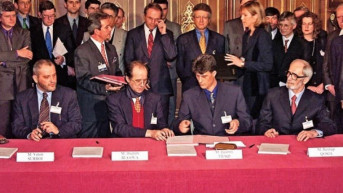
NATO’s bombing was announced on March 19, 1999, for five days hence, i.e., March 24th, a window that permitted all OSCE observers to leave the country. The first week of the campaign focused exclusively on Belgrade and other parts of Yugoslavia, not Kosovo. If the military alliance were truly blitzing the country to prevent a planned, looming genocide, it is odd that Milosevic was not only effectively handed a 12-day-long grace period to executing it, and that Kosovo was not the direct target of the bombing.
The genocide, of course, never ultimately occurred.

Nonetheless, to this day, NATO’s criminal destruction of Yugoslavia is widely touted in the Western mainstream as a righteous “humanitarian intervention,” which prevented another Holocaust. There was indeed a mass exodus of Kosovo Albanians—some fled the terror and destruction raining down on them from the skies. As a KLA operative who “[filmed] the plight of displaced Albanian civilians with a video camera” for Western consumption admitted to The Guardian in June 1999, “KLA advice, rather than Serbian deportations” was also a factor.
Political scientist Babak Bahador has written an entire book advocating Račak’s propaganda value, explaining how “unexpected and emotive images” presented in the media “can rapidly open policy windows of opportunity.” Of course, the CIA and Pentagon are well aware of this, and routinely exploit such images for that precise purpose. Given the Empire covertly seeks to influence the content of Hollywood movies to boost its international PR, it is somewhat surprising the bombing of Yugoslavia has not since been committed to celluloid.
This may be because the facts of what happened in Račak and why are very clear, even if hiding in plain sight. To reiterate the established narrative of the time would open up the same easily provable, admitted lies to re-exposure.
To concede NATO destroyed an independent country on the basis of black propaganda and fraud, in which all the West’s journalists, rights groups, and politicians were complicit, simply cannot be countenanced. After all, that might mean they cannot do it again in the future.

CovertAction Magazine is made possible by subscriptions, orders and donations from readers like you.
Blow the Whistle on U.S. Imperialism
Click the whistle and donate
When you donate to CovertAction Magazine, you are supporting investigative journalism. Your contributions go directly to supporting the development, production, editing, and dissemination of the Magazine.
CovertAction Magazine does not receive corporate or government sponsorship. Yet, we hold a steadfast commitment to providing compensation for writers, editorial and technical support. Your support helps facilitate this compensation as well as increase the caliber of this work.
Please make a donation by clicking on the donate logo above and enter the amount and your credit or debit card information.
CovertAction Institute, Inc. (CAI) is a 501(c)(3) non-profit organization and your gift is tax-deductible for federal income purposes. CAI’s tax-exempt ID number is 87-2461683.
We sincerely thank you for your support.
Disclaimer: The contents of this article are the sole responsibility of the author(s). CovertAction Institute, Inc. (CAI), including its Board of Directors (BD), Editorial Board (EB), Advisory Board (AB), staff, volunteers and its projects (including CovertAction Magazine) are not responsible for any inaccurate or incorrect statement in this article. This article also does not necessarily represent the views the BD, the EB, the AB, staff, volunteers, or any members of its projects.
Differing viewpoints: CAM publishes articles with differing viewpoints in an effort to nurture vibrant debate and thoughtful critical analysis. Feel free to comment on the articles in the comment section and/or send your letters to the Editors, which we will publish in the Letters column.
Copyrighted Material: This web site may contain copyrighted material the use of which has not always been specifically authorized by the copyright owner. As a not-for-profit charitable organization incorporated in the State of New York, we are making such material available in an effort to advance the understanding of humanity’s problems and hopefully to help find solutions for those problems. We believe this constitutes a ‘fair use’ of any such copyrighted material as provided for in section 107 of the US Copyright Law. You can read more about ‘fair use’ and US Copyright Law at the Legal Information Institute of Cornell Law School.
Republishing: CovertAction Magazine (CAM) grants permission to cross-post CAM articles on not-for-profit community internet sites as long as the source is acknowledged together with a hyperlink to the original CovertAction Magazine article. Also, kindly let us know at info@CovertActionMagazine.com. For publication of CAM articles in print or other forms including commercial internet sites, contact: info@CovertActionMagazine.com.
By using this site, you agree to these terms above.
About the Author

Kit Klarenberg is an investigative journalist exploring the role of intelligence services in shaping politics and perceptions.
Follow him on Twitter @KitKlarenberg.





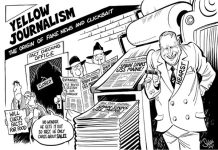

Racak is just one of many Villages where Albanian civilians were killed. About 30 altogether.
Was the Meja Village massacre of 370 Albanian Civilians also a “fake massacre”